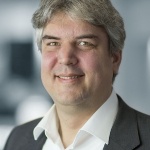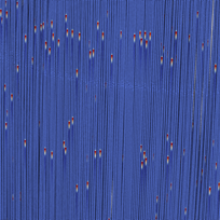Focus Area A aims to develop novel simulation techniques that are suitable for virtual testing environments to address, analyse and develop technical concepts. This is considered to be the basis for further developing novel automation techniques with key advantages in interaction with soft tissues that undergo large deformations. The specific emphasis was on modelling, simulating, and verifying the complex nature of the soft tissue, particularly the multi-scale nature of skeletal muscle tissue.
Research Projects @ University of Stuttgart
The main aim of Project S-1/I is to generate a realistic in-silico neuro-musculoskeletal (NMS) environment to investigate the causal relationships between neural-inputs and motor-outputs of the musculoskeletal system in a controlled environment. Such NMS models may provide insights, which are practically obtainable via experimental techniques. This may benefit human-machine-interaction (HMI) applications such as powered prosthetics, orthoses and human-robot collaborations by enriching control schemes with simulated data, aiding the development/placement of the (physiological data) sensors or predicting intervention outcomes. Given the recent quality control and standardisation efforts in the field of biomedical simulations by applying the AMSE V&V 407 and H2020 SC1-PM-16- 20178, the use of commercial tools may be advantageous compared to research codes in regards to usability and deployability. In addition to HMI applications, the NMS simulation models may be used in fields of surgery planning, rehabilitation, sports/performance and ergonomics. (Supervisors: Prof. Röhrle, Prof. Haasdonk, Prof. Cheng)
To understand the functioning of the neuro-muscular system and diagnose diseases on a patient, capturing electromyography (EMG) by electrodes on the skin surface is the only non-intrusive way to obtain data. Signal decomposition algorithms that infer the behaviour of the system from such EMG data can be developed with the help of in-silico experiments, i.e., forward simulations of the activation, contraction and EMG signal generation of the muscular system. Simulating the human neuro-muscular system is a task that involves high computational load if a reasonable accuracy is desired. The goal was to extend existing software to simulate a given model with High Performance Computing techniques and run high-fidelity simulations on a supercomputer. At the same time, numerical
schemes should be improved to achieve a higher numerical efficiency. (Supervisors: Prof. Mehl, Prof. Röhrle, Dr Bradley)
The main focus of the project includes developing projection-based reduction techniques based on the proper orthogonal decomposition (POD) and greedy approximation with local basis generation procedures to satisfy the real-time constraints. For the construction of the basis the aim is not to use only state-information, but to include the quantities that are more suitable for the control settings, for example, low-rank factors of corresponding Riccati equations. The idea is to realise a bridge between soft tissue modelling and control application settings.(Supervisors: Prof. Haasdonk, Prof. Besier, Prof. Röhrle)
Research Projects @ University of Auckland
The aim of my research is to develop an intuitive, EMG-informed model-based control strategy for an ankle assistive robot. The control strategy will predict the walking intention of the user and improve assistive performance by reducing the metabolic cost of walking, in comparison to conventional control strategies. (Supervisors: Prof. Besier, Dr. B. Ruddy, Prof. Schmitt)
Contact

Sina Schorndorfer
Coordinator GRK 2198
[Image: Universität Stuttgart]

Oliver Röhrle
Univ.-Prof.PI and Spokesperson GRK 2198
[Image: Universität Stuttgart]


